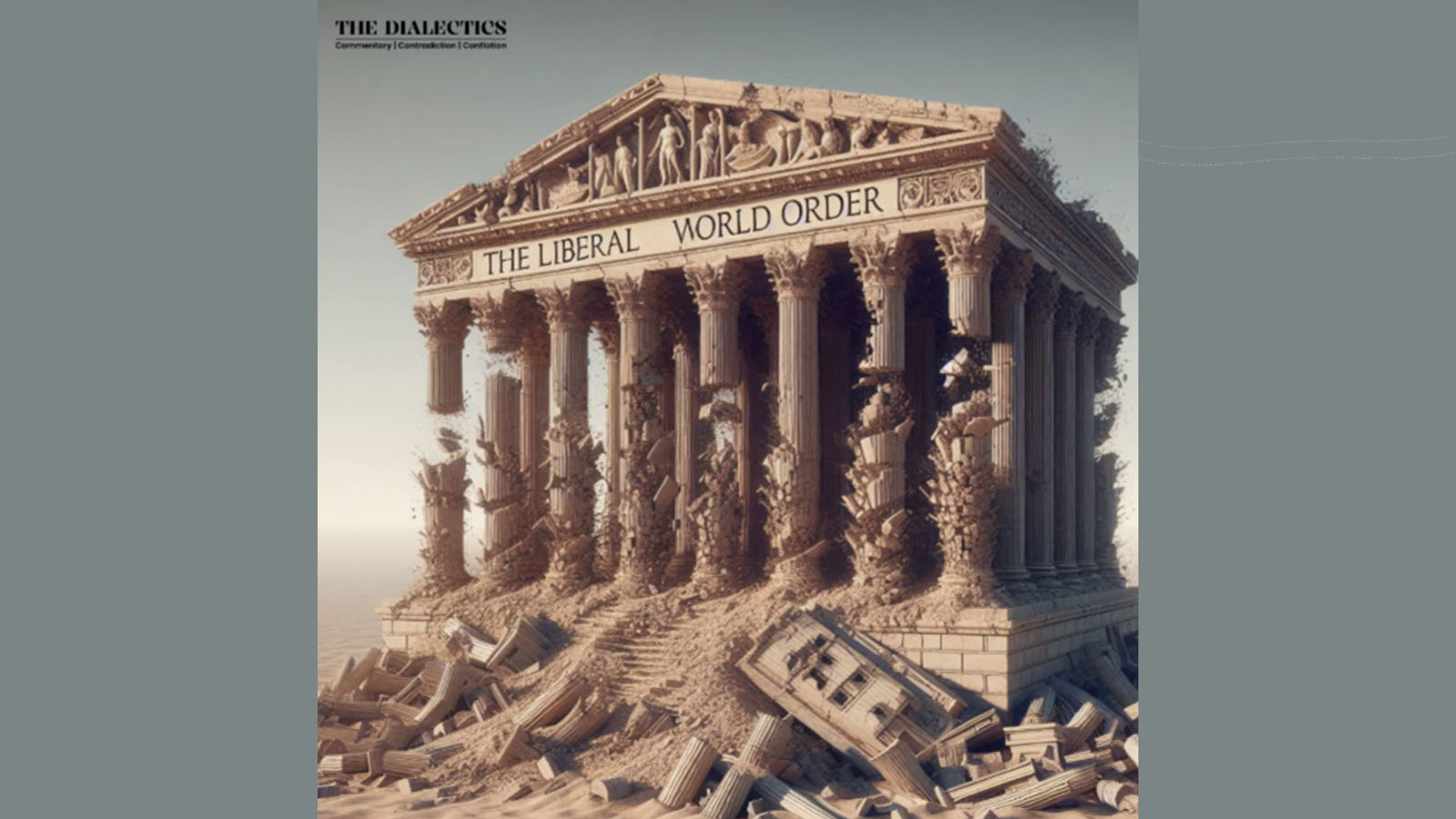After the end of the Cold War, the liberal world order was erected by the sole superpower USA around the core tenets of economic interdependence and democratic peace — the two pillars of the liberal international order.
The primary architect of this order wanted to spread their domestic ideology of democracy and international institutional membership and create an open and inclusive international economy in order to spread their political, economic and cultural dominance worldwide. However, the liberal international order has been in decline since the end of the second decade of the 21st century as the US is no longer able to bear the sole responsibility of maintaining liberal international order’s stability. John J. Mearsheimer, a renowned IR scholar writes, “By 2019, it was clear that the liberal international order was in deep trouble. The tectonic plates that underpin it are shifting, and little can be done to repair and rescue it.”
A convergence of forces — resurgent nationalism, the resurgence of regional wars, the proliferation of minilateral organisations, and the formation of the anti-west Alliance in the shadow of regional and global geopolitical rivalry — challenges the liberal world order. The article will explain these reasons, citing contemporary examples from recent world events.
The Resurgence of Nationalism
The increasing socioeconomic disparities, cultural polarisation, and large-scale migration have fostered conditions conducive to the resurgence of nationalist ideologies, which prioritise national interests and realpolitik over global cooperation and multilateralism. This paradigm shift is manifested in the growing popularity of populist, nationalist and right-wing political parties worldwide, advocating for protectionist economic measures, stringent immigration policies, and a more inward-looking approach to foreign affairs — ultimately leading to the erosion of the liberal international order. Brexit and debates on stringent immigration policies in European countries are recent examples of it.
The Resurgence in Regional wars,
The Russian invasion of Ukraine, the Israel-Hamas war, civil wars in Sudan, and increased tensions in the South China Sea exemplified regional conflicts in three main continents — Asia, Europe and Africa. The eastward NATO expansion created a national security concern for Russia and ignited a protracted conflict in Europe. The NATO expansion and the ongoing Russia-Ukraine war pushed Russia in the lap of China, a global competitor of the US and created a gap between European countries and Russia.
The Israel-Hamas war and its spillover effects on Iranian proxies destabilised West Asia and created the Red Sea Crisis from October 2023 to March 2024, which hampered global trade and ongoing normalisation efforts by the USA between Arab nations and Israel. The recent events such as drone attacks on Saudi Arabia oil installations by Houthis (an Iranian proxy in Yemen), the Iranian first-ever direct attack on Israel and the increased technological capabilities of Hezbollah show the decreasing capabilities of the USA as a security provider in the region.
The civil war in South Sudan between two rival factions of the military government of Sudan, the Sudanese Armed Forces (SAF) under Abdel Fattah al-Burhan, and the paramilitary Rapid Support Forces (RSF) under the Janjaweed leader Hemedti and foreign involvement in it further destabilised East Africa and caused migration crisis in neighbouring nations.
Hence, the resurgence of regional conflict and involvement of great powers in these regional conflicts, the Intensifying rivalry between the US and China globally (trade wars between them) and regionally (in the South Pacific), China’s defiance of the International Court of Justice ruling on disputed waters of South China sea and an informal Anti-western alliance formation among China, Russia, Iran, North Korea and like-minded nation undoubtedly exhibit the formation of poles in international politics which undermines the liberal international order.
Protectionism in Trade
The global economic landscape has undergone significant changes in recent years, marked by a shift away from traditional free trade policies and multilateralism towards protectionism and minilateralism. This transformation is evident in both developed and developing countries, where the working class increasingly views protectionist measures as a means to safeguard economic stability, boost job creation, and enhance national competitiveness. The transition from the Trump to the Biden administration in the United States exemplifies this trend, with both administrations displaying growing scepticism towards free trade. Recent economic initiatives, such as the India-Middle East-Europe Economic Corridor, the Indo-Pacific Economic Framework for Prosperity, I2U2, and the Declaration on Atlantic Partnership, notably lack traditional free trade clauses focused on lowering tariffs and barriers.
The proliferation of Minilateral Organization
In response to the perceived ineffectiveness of multilateralism, minilateralism has emerged as a new approach to international cooperation. This strategy involves forming small groups of countries with shared interests to coordinate actions on specific issues. Examples include the Quadrilateral Security Dialogue (QUAD), AUKUS, I2U2, and the India-Middle East-Europe Economic Corridor. Minilateralism offers advantages such as faster decision-making, flexibility, and a more focused approach to addressing specific challenges. However, it also presents potential drawbacks, including competition among minilateral groups and the risk of creating a fragmented international system that may struggle to address global challenges requiring broader cooperation. This shift in global economic and political dynamics reflects a complex interplay between domestic economic concerns, geopolitical realignments, and the search for more efficient modes of international cooperation in an increasingly multipolar world.
Conclusion
In the third decade of the 21st century, the tectonic plates of liberal international order are experiencing a profound transformation. The rise of nationalism, protectionist policies, minilateral organisations, and regional conflicts between nations paint a vivid picture of a world on the brink of a new epoch. Following the post-Cold War period, the pillars of liberal international order established after the Second World War face fundamental restructuring now. By observing all these events, one can say that American dominance and liberal international order have been dented and may not be repaired.
About Author
Anmol Kumar holds a postgraduate degree in politics and international relations from Pondicherry University. He is currently working as a Research Assistant for an ICSSR Major Project at Pondicherry University. His interests lie in Geopolitics, Foreign Policy and International Relations.
Author
-

Anmol Kumar currently works as an Assistant Editor at Defence and Security Alert (DSA) Magazine. He holds a Bachelors in Persian language from Jawaharlal Nehru University and Masters in International Relations from Pondicherry University. He is well known for his research and analyses on topics like defence strategy, geopolitics, West Asia and anything that falls under the purview of international relations.
View all posts




